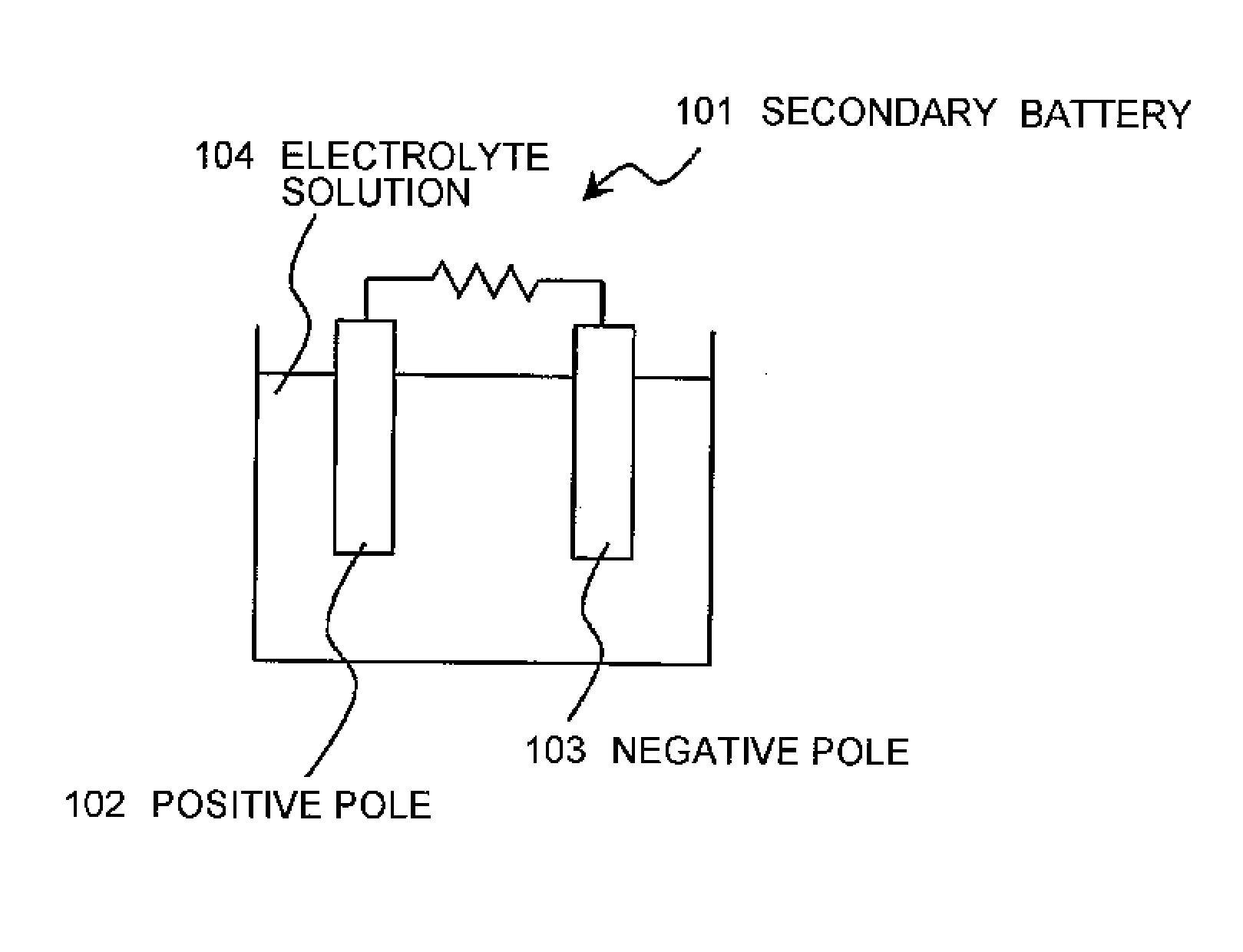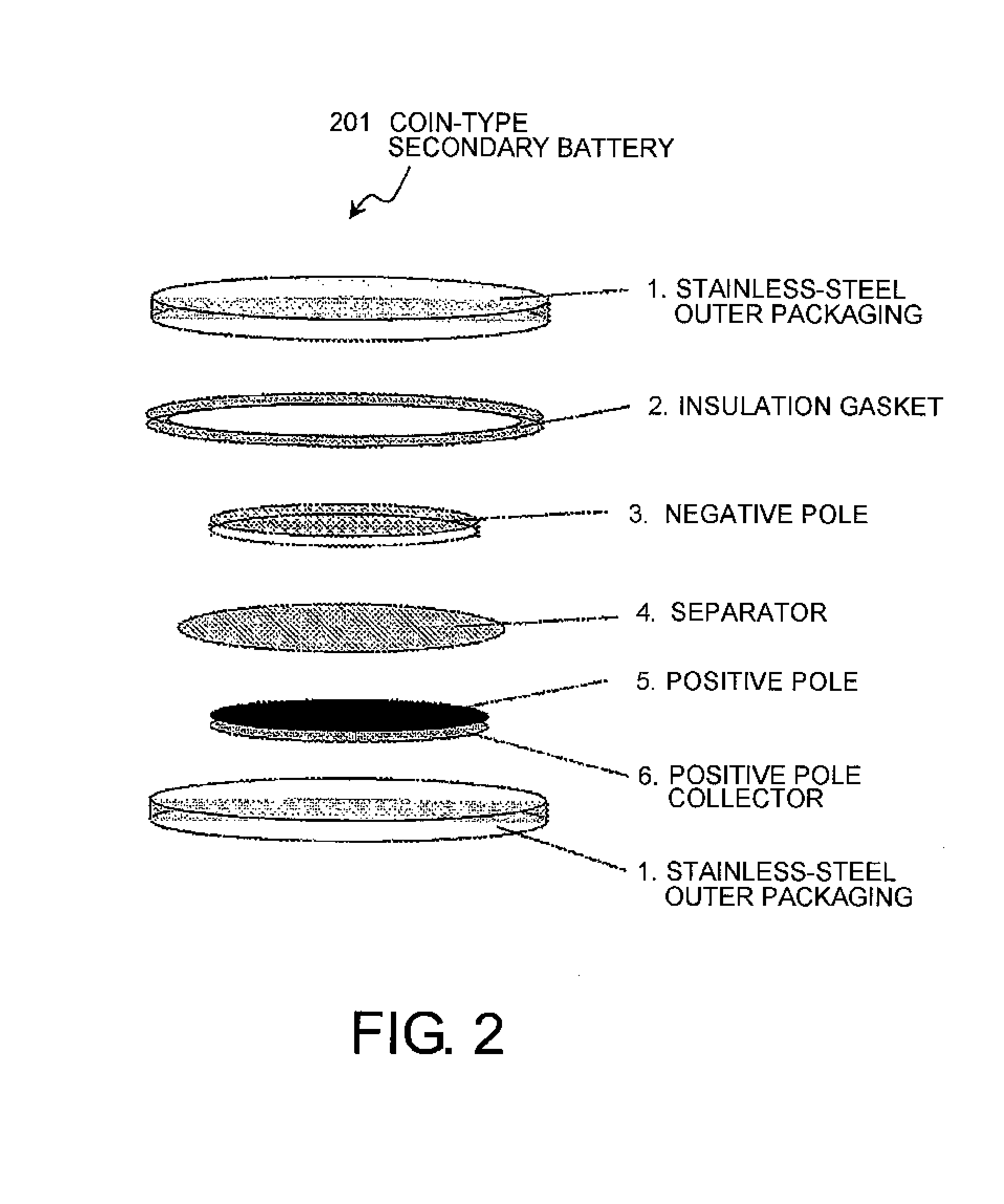Secondary battery
a secondary battery and lithium-ion battery technology, applied in the direction of non-aqueous electrolyte cells, cell components, sustainable manufacturing/processing, etc., can solve the problems of low efficiency, low efficiency, and general volatile volatile organic solvents
- Summary
- Abstract
- Description
- Claims
- Application Information
AI Technical Summary
Benefits of technology
Problems solved by technology
Method used
Image
Examples
example 1
[0100]LiTFSI was dissolved in trimethyl phosphate (hereafter, abbreviated as TMP) that is a phosphate ester derivative in such an amount as to give a concentration of 2.5 mol / L (2.5 M), and this was used as an electrolyte solution for the combustion test. A discharge capacity test was conducted by using a positive pole made of a LiMn2O4 active material and a negative pole made of graphite. The test results are shown in Table 1.
example 2
[0101]LiTFSI was dissolved in a solution in which TMP and EC / DEC (3:7) as a carbonate organic solvent were mixed in a volume ratio of 60:40 (TMP / EC / DEC=60 / 12 / 28), in such an amount as to give a concentration of 2.0 mol / L (2.0 M), and this was used as an electrolyte solution for the combustion test. A discharge capacity test was conducted by using the same positive pole and negative pole as those of Example 1, except for the electrolyte solution. The test results are shown in Table 1.
example 3
[0102]LiTFSI was dissolved in a solution in which TMP and EC / DEC (3:7) as s a carbonate organic solvent were mixed in a volume ratio of 60:40 (TMP / EC / DEC=60 / 12 / 28), in such an amount as to give a concentration of 2.5 mol / L (2.5 M), and this was used as an electrolyte solution for the combustion test. A discharge capacity test was conducted by using the same positive pole and negative pole as those of Example 1, except for the electrolyte solution. The test results are shown in Table 1.
PUM
| Property | Measurement | Unit |
|---|---|---|
| diameter | aaaaa | aaaaa |
| thickness | aaaaa | aaaaa |
| length | aaaaa | aaaaa |
Abstract
Description
Claims
Application Information
 Login to View More
Login to View More - R&D
- Intellectual Property
- Life Sciences
- Materials
- Tech Scout
- Unparalleled Data Quality
- Higher Quality Content
- 60% Fewer Hallucinations
Browse by: Latest US Patents, China's latest patents, Technical Efficacy Thesaurus, Application Domain, Technology Topic, Popular Technical Reports.
© 2025 PatSnap. All rights reserved.Legal|Privacy policy|Modern Slavery Act Transparency Statement|Sitemap|About US| Contact US: help@patsnap.com



